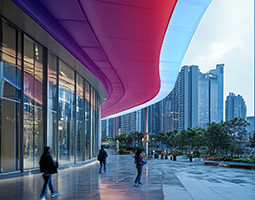Throughout my career I've worked within numerous transformations in the way we approach product development. From the early days of waterfall to the adoption of agile and lean principles, each shift has brought its own set of challenges and opportunities. However, nothing quite compares to the revolutionary potential of AI-powered product engineering.
In our exploration within the Human Experience report, it's evident that integrating AI across the product lifecycle is not just beneficial—it's a strategic imperative. Organisations that don’t embrace this paradigm will risk lagging in an increasingly competitive and dynamic market.
Building high-quality, customer-centric solutions is inherently complex. Even with well-defined tools, processes and objectives, projects can easily get derailed, and maintaining productivity becomes increasingly challenging as the complexity of our technology estates grows. Infusing AI-powered tooling into the product engineering flow offers a transformative approach to address these challenges head -on.
By embedding AI at every stage of the development process, organisations can achieve unprecedented levels of productivity, quality, and speed. AI-powered tools accelerate rapid prototyping and experimentation, enabling teams to validate ideas faster and gather deeper, more actionable user insights, driven by enriched and nuanced data. This not only mitigates risks but also enables swift pivots in response to evolving market demands and consumer preferences.
“The benefits are vast, including accelerated time to market and value, reduced development costs and elevated customer satisfaction and loyalty.”
We’re now seeing how this approach can also significantly enhance the quality and maintainability of our digital products. Intelligent code analysis and optimisation tools, combined with automated testing frameworks and monitoring systems, help identify and resolve defects early, reduce tech debt, and ensure smooth performance and scalability. The value of these mechanisms cannot be overstated, especially for those who have spent countless hours debugging, refactoring code and tracking down production issues.
Perhaps the most exciting aspect of this shift is the potential to augment and amplify human creativity and problem-solving capabilities. By reducing cognitive load and automating repetitive (mundane) tasks, AI frees up developers to focus on more strategic and innovative work. This boosts productivity and job satisfaction while enabling organisations to attract and retain top talent.
However, successfully adopting AI-powered product engineering requires careful planning and execution. Here are some key considerations for organisations looking to make the leap:
- Align your AI strategy with business goals and customer needs, ensuring that AI-driven development initiatives deliver tangible value
- Invest in a holistic data strategy and governance framework to support AI-powered engineering, guaranteeing the availability, quality, and security of data assets
- Cultivate a culture of continuous experimentation, learning and collaboration, empowering teams to embrace new ways of working and share knowledge across the organisation
- Upskill and reskill your workforce to fully leverage AI-powered tools and methodologies, providing the necessary training and support to help employees thrive in their evolving roles
- Establish clear metrics that measure the impact of AI-powered engineering, using these insights to continuously optimise and refine your processes
At Cognizant, we've developed a groundbreaking solution to help organisations embrace this transformative journey —Cognizant Flowsource™. This platform offers a unified developer experience powered by automation and gen AI, enabling organisations to accelerate the end-to-end software development lifecycle (SDLC) and unlock entirely new levels of productivity and speed to value.
With Flowsource, product teams can leverage baked-in AI tools to simplify, automate, and infuse intelligence into every stage of the development continuous flow. The platform's extensible architecture, pre-configured templates, and integrated quality assurance mechanisms ensure consistency, efficiency, and high-quality code output.
This AI-powered impact extends far beyond pure development efforts. By enabling organisations to innovate faster, deliver higher quality solutions, and respond more effectively to consumer trends and needs, this transformative approach can drive significant business value. The benefits are vast, including accelerated time to market and value, reduced development costs and elevated customer satisfaction and loyalty.
Looking forward, the integration of AI in product engineering is set to define competitive dynamics across industries. Organisations that harness this potential effectively will navigate the future confidently, mastering the art of rapid adaptation and innovation in the face of relentless evolution and disruption.
In a world where change is compounding exponentially, the ability to innovate and shift gears rapidly, experiment fearlessly, and deliver exceptional human experiences is what separates successful organisations from the rest.

















